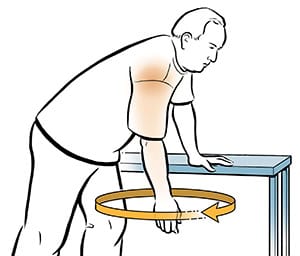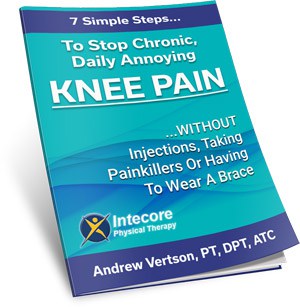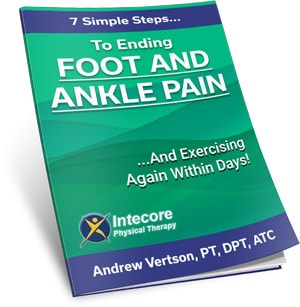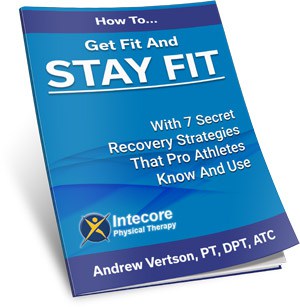
Have you ever felt like your shoulder was literally freezing up on you? If you’re struggling with a frozen shoulder, you’re not alone. Frozen shoulder exercises can be your key to unlocking stiffness and discomfort, providing a natural alternative to more invasive treatments.
Known medically as adhesive capsulitis, frozen shoulder is characterized by significant pain and immobility in your shoulder joint. This condition typically develops slowly, peaks, and then gradually improves over a few years. However, waiting it out isn’t the only option.
Many people prefer to avoid painkillers due to the risks of side effects and dependency, and surgery, with its inherent risks and long recovery time, might not be an appealing option either. Instead, targeted exercises can offer a safe, effective, and natural way to alleviate symptoms and restore mobility.
In this blog post, I’ll introduce you to five simple exercises specifically designed to help ease a frozen shoulder. These exercises are easy to follow and can be done in the comfort of your home, setting you on a course to regain full function without unnecessary medications or procedures.
Ready to get started? Let’s dive in!
More Posts Like This By Intecore Physical Therapy:
How to Sleep Comfortably with Neck Pain
Ongoing Shoulder Pain: What Is Causing It?
Neck Pain Relief: Apply Heat Therapy Effectively
Table of Contents
The Importance of Frozen Shoulder Exercises
When it comes to managing a frozen shoulder, exercise is essential. Engaging in specific movements designed for this condition can significantly enhance your shoulder’s range of motion and reduce pain.
Regular exercises help stretch and strengthen the shoulder muscles and the joint capsule, the connective tissue surrounding the shoulder. By gently stretching the capsule, you can prevent it from becoming tighter and more immobile. This is key because a frozen shoulder can often lead to a vicious cycle of pain and stiffness, leading to further inactivity that only worsens the condition.
Moreover, these exercises play a pivotal role in maintaining the health of your shoulder joint. They ensure that the joint stays as lubricated as possible, which naturally reduces stiffness and pain.
Additionally, consistent practice of these exercises can ward off long-term immobility. In the context of a frozen shoulder, “use it or lose it” couldn’t be more true. By keeping the joint in motion, you’re not only working towards immediate relief but also ensuring that your shoulder doesn’t lose more function over time.
So, what are the best exercises for frozen shoulder? Let’s take a look at some frozen shoulder exercises to help…
5 Simple Frozen Shoulder Exercises You Can Do At Home
Exercise 1: Pendulum Stretch

The Pendulum Stretch is designed to gently initiate movement in the shoulder joint without excessive use of the muscles. This exercise helps reduce stiffness and increase mobility in a frozen shoulder.
How to Perform the Pendulum Stretch:
- Stand next to a table or another stable surface, slightly bending your knees.
- Lean forward slightly, allowing your affected arm to hang down loosely.
- Gently sway your body to create a momentum that moves your arm in small circles. Start with clockwise direction and then switch to counterclockwise.
- Perform this movement for about 30 seconds in each direction.
Benefits: This exercise helps by lubricating the shoulder joint and stretching the shoulder capsule, thereby reducing stiffness and pain associated with a frozen shoulder.
Exercise 2: Towel Stretch
One of my favorite frozen shoulder exercises, the Towel Stretch targets the flexibility of the shoulder joint, specifically aiming to improve the range of motion by stretching the muscles and tendons around the shoulder.
How to Perform the Towel Stretch:
- Take a long towel and hold it in both hands behind your back, forming a horizontal line.
- Use your good arm to pull the affected arm upward by lifting the towel gently.
- Hold the stretch for 15 to 30 seconds, feeling a gentle pull in your shoulder.
- Repeat 3-4 times, ensuring not to overstretch.
Benefits: This stretch is particularly beneficial for reaching motions like combing your hair or reaching for a back pocket, as it helps extend the range and ease movements in daily tasks.
Exercise 3: Armpit Stretch

Another great frozen shoulder exercise is the armpit stretch which aims to improve the vertical mobility of your arm, helping to extend the shoulder’s ability to lift and reach upwards.
How to Perform the Armpit Stretch:
- Stand in front of a shelf or a stable surface that’s just above chest height.
- Place the affected arm on the shelf and slightly bend your knees.
- Gently deepen the bend in your knees, allowing your armpit to stretch open as your body lowers.
- Hold this position for 20 to 30 seconds, then straighten your knees to relax.
- Repeat 2-3 times.
Benefits: This exercise helps by increasing the upward mobility of the shoulder, enhancing your ability to perform overhead activities without discomfort.
Exercise 4: Cross-Body Reach

The Cross-Body Reach helps stretch the shoulder muscles and the back of the shoulder joint, improving flexibility and reducing tightness across the shoulder, making it another favorite frozen shoulder exercises.
How to Perform the Cross-Body Reach:
- Bring your affected arm across your body.
- With your good arm, hold your affected arm above the elbow.
- Gently pull your affected arm closer to your chest until you feel a stretch in the back of your shoulder.
- Hold for 15 to 30 seconds, then release.
- Repeat 3-4 times.
Benefits: This exercise is effective in reducing the pain and stiffness across the shoulder, particularly helping with horizontal movements and cross-body reaches.
Exercise 5: Forward Flexion Stretch
The Forward Flexion Stretch aims to increase the forward range of motion in the shoulder, crucial for activities that involve reaching forward or upward.
How to Perform the Forward Flexion Stretch:
- Stand upright and slowly raise your affected arm forward with the help of your good arm, if necessary.
- Try to lift your arm as high as comfortable, ideally until it is parallel with the floor.
- Hold the position for 15 to 20 seconds.
- Slowly lower your arm back down.
- Repeat 3-4 times.
Benefits: This stretch facilitates improvements in movements where you need to reach forward, such as pushing open a door or reaching for an item on a high shelf, directly addressing the limitations caused by a frozen shoulder.
So, there you have it—five simple frozen shoulder exercises to help ease the discomfort and get you moving more freely.
Remember, the key to these exercises is consistency. Make them a part of your daily routine, and you’re likely to see improvements in your mobility and a decrease in pain over time.
We know it can be frustrating to deal with the slow progress of a frozen shoulder, but with a little patience and perseverance, you can achieve significant relief. And of course, if you ever feel unsure about a movement or if the pain seems to be getting worse, don’t hesitate to reach out. We’re here to help guide you through your recovery journey.
So, give these frozen shoulder exercises a try, stay positive, and keep moving—your shoulder will thank you for it!
Ready To Get Help With Physical Therapy?
If you’re struggling with shoulder pain and need some help to get relief, we’re here to help return you to life pain-free!
To find out more, click here to fill out this form and tell about what’s going on. You can also give us a call here: 949-565-4944.
To your health!
- 7 Ways to Get Rid of Tension Headaches Naturally - July 1, 2025
- Why Are My Feet Swollen? Common Causes Explained - June 2, 2025
- What Is Restless Leg Syndrome? Symptoms, Causes, and Relief Options - May 5, 2025












